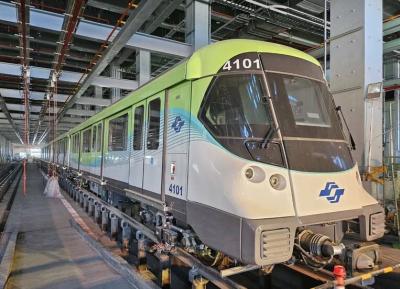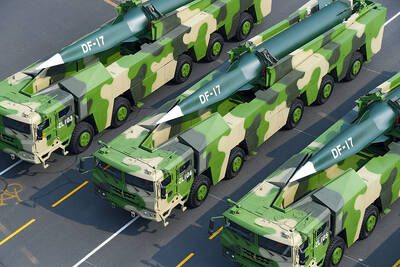The US Congress on Thursday unveiled a defense bill that reaffirms the US’ commitment to Taiwan and includes provisions to explore a medical partnership between the nations.
Under the provisions of the National Defense Authorization Act for Fiscal Year 2021, agreed upon by the US Senate’s and House of Representatives’ armed services committees, the US secretary of defense should work with the US secretary of health and human services to establish a medical security partnership with Taiwan.
In 180 days after the bill becomes law, the defense secretary must submit a report to the committees on the feasibility of such a partnership.
The report should account for “the goals and objectives of developing a medical security partnership on issues related to pandemic preparedness and control” and “a discussion of current and future plans to cooperate on medical security activities.”
It must also include “an evaluation of the feasibility of cooperating on a range of activities under the partnership, including research and production of vaccines and medicines; joint conferences with scientists and experts; collaboration relating to and exchanges of medical supplies and equipment; and the use of hospital ships such as the US Naval Ship Comfort and US Naval Ship Mercy.”
The bill also reaffirms the US’ Taiwan Relations Act and the “six assurances” as the foundation of ties between Washington and Taipei, which serve as the bedrock for the nations to “fully pursue the deepening of the extensive, close and friendly relations” and “facilitate greater cooperation and the broadening and deepening of United States-Taiwan relations.”
The act defines Washington’s relations with Taipei, requiring the US to make available “defense articles and services” to enable Taiwan to maintain sufficient self-defense capabilities.
The “six assurances,” made by then-US president Ronald Reagan in 1982, pledge not to set a date for ending arms sales to Taiwan and not to consult with China on such sales.
According to the defense bill, with China raising its military threats and acts of coercion against Taiwan, the US should “continue to support the development of capable, ready and modern defense forces necessary for Taiwan to maintain a sufficient self-defense capability, including supporting acquisition by Taiwan of defense articles and services through foreign military sales, direct commercial sales and industrial cooperation.”
This cooperation should have “an emphasis on capabilities that support Taiwan’s asymmetric defense strategy, including anti-ship, coastal defense, anti-armor, air defense, undersea warfare, advanced command, control, communications, computers, intelligence, surveillance and reconnaissance, and resilient command and control capabilities,” the bill said.
The defense bill requires US Senate and House approval before it is sent to the president to be signed into law.

Taiwanese scientists have engineered plants that can capture about 50 percent more carbon dioxide and produce more than twice as many seeds as unmodified plants, a breakthrough they hope could one day help mitigate global warming and grow more food staples such as rice. If applied to major food crops, the new system could cut carbon emissions and raise yields “without additional equipment or labor costs,” Academia Sinica researcher and lead author the study Lu Kuan-jen (呂冠箴) said. Academia Sinica president James Liao (廖俊智) said that as humans emit 9.6 billion tonnes of carbon dioxide compared with the 220 billion tonnes absorbed

The Taipei Mass Rapid Transit (MRT) Wanda-Zhonghe Line is 81.7 percent complete, with public opening targeted for the end of 2027, New Taipei City Mayor Hou You-yi (侯友宜) said today. Surrounding roads are to be open to the public by the end of next year, Hou said during an inspection of construction progress. The 9.5km line, featuring nine underground stations and one depot, is expected to connect Chiang Kai-shek Memorial Hall Station to Chukuang Station in New Taipei City’s Jhonghe District (中和). All 18 tunnels for the line are complete, while the main structures of the stations and depot are mostly finished, he

Taipei is to implement widespread road closures around Taipei 101 on Friday to make way for large crowds during the Double Ten National Day celebration, the Taipei Department of Transportation said. A four-minute fireworks display is to be launched from the skyscraper, along with a performance by 500 drones flying in formation above the nearby Nanshan A21 site, starting at 10pm. Vehicle restrictions would occur in phases, they said. From 5pm to 9pm, inner lanes of Songshou Road between Taipei City Hall and Taipei 101 are to be closed, with only the outer lanes remaining open. Between 9pm and 9:40pm, the section is

China’s plan to deploy a new hypersonic ballistic missile at a Chinese People’s Liberation Army Rocket Force (PLARF) base near Taiwan likely targets US airbases and ships in the western Pacific, but it would also present new threats to Taiwan, defense experts said. The New York Times — citing a US Department of Defense report from last year on China’s military power — on Monday reported in an article titled “The missiles threatening Taiwan” that China has stockpiled 3,500 missiles, 1.5 times more than four years earlier. Although it is unclear how many of those missiles were targeting Taiwan, the newspaper reported